Kalamay Hati is made with glutinous rice flour, coconut milk, and muscovado sugar. Perfectly sweet and sticky, this rice cake is delicious as a midday snack or after-meal dessert!
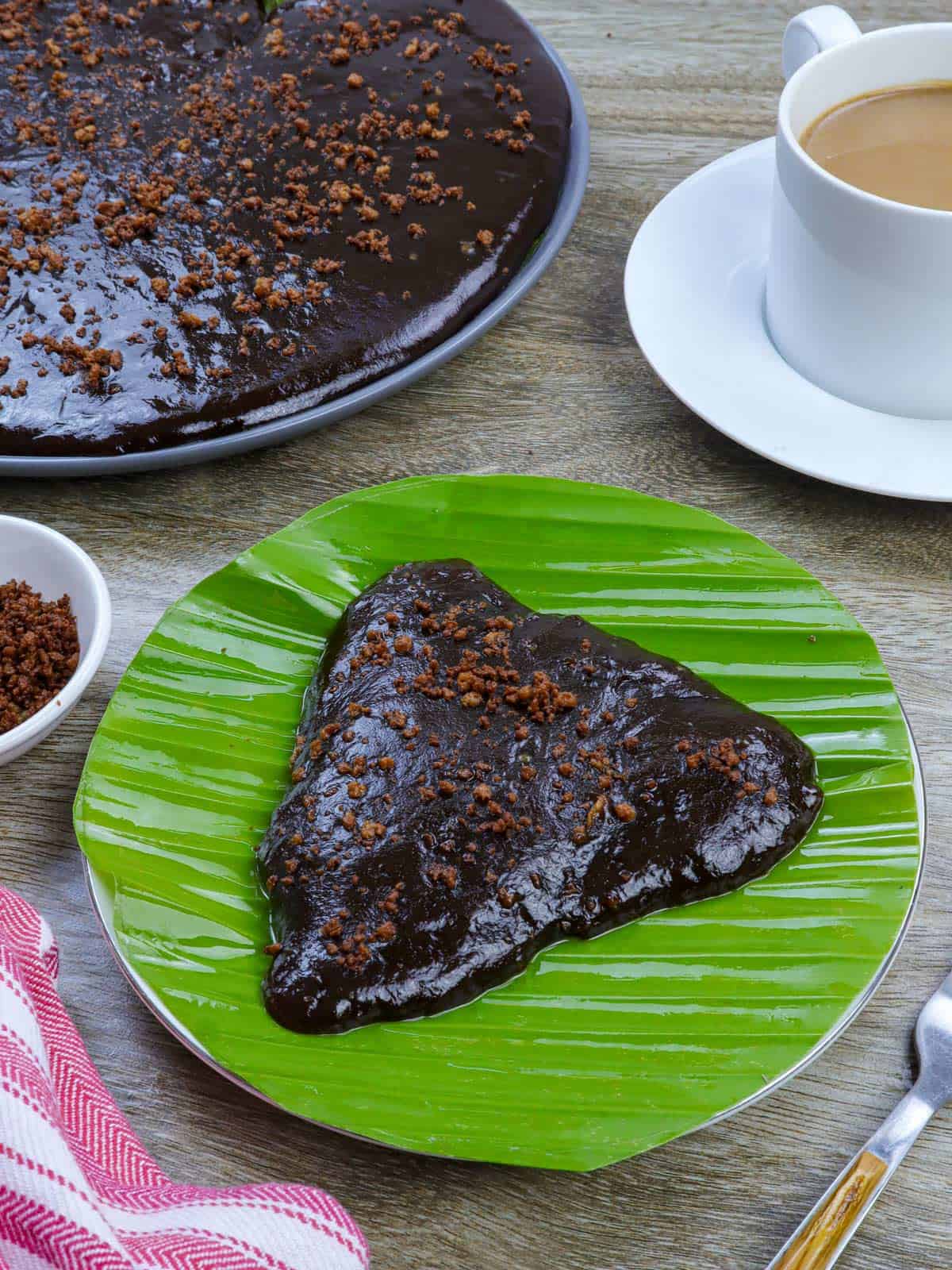
Kalamay is a proud symbol of many local traditions across the Philippines. Many regions have their versions, made with various flavors, including sapin-sapin, kapit, and bibingkoy. Sweet, chewy, and comforting, you'll find these sticky rice cakes at big celebrations and simple, everyday snacks.
Kalamay Hati, also called sundot kulangot, is a sticky rice dessert made from glutinous rice flour, coconut milk, and muscovado brown sugar. It's thick, glossy, golden brown, soft and chewy, and has a rich coconut flavor. Although easy to make, it does require some elbow grease, as the mixture needs to be stirred and turned in the pan for about an hour, until you can hardly lift the spoon and the mixture pulls away from the sides of the pot.
The name kalamay (sticky rice cake) hati (split) comes from the old practice of selling the sticky concoction in halved coconut shells (bao) sealed with paper tapes. A popular delicacy from the Negros islands and Visayas region, it's an integral part of Filipino celebrations and gatherings such as town fiestas, birthdays, and special holidays.
Ingredient notes
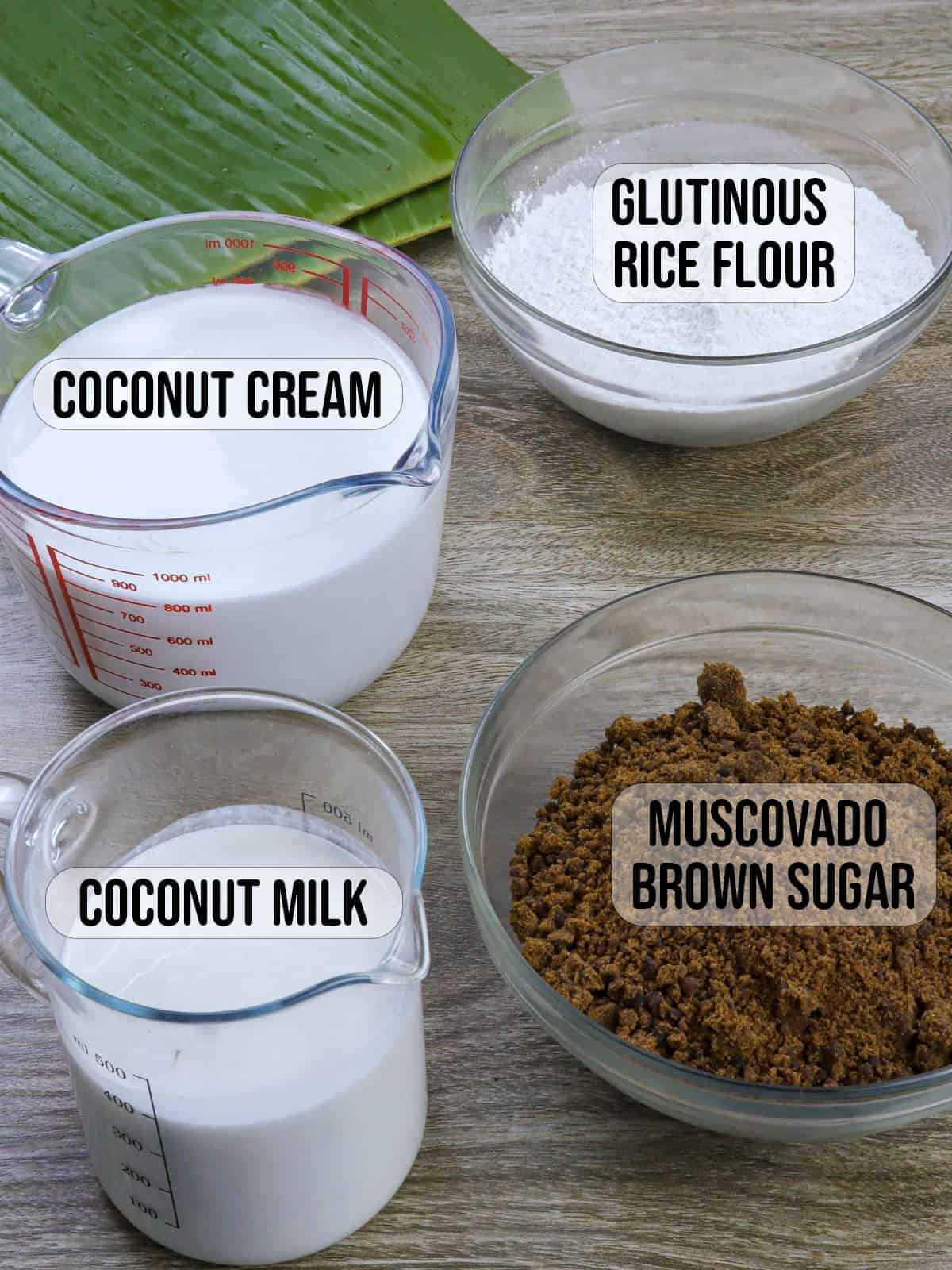
- Glutinous rice flour- traditionally pilit (glutinous rice) is soaked in water overnight to soften and then ground to a smooth mixture called galapong. To make the process easier, the recipe uses glutinous rice flour, also called sticky rice or sweet rice.
- Coconut milk- serves as the liquid base. Adds a rich, creamy flavor.
- Muscovado sugar- provides a golden brown color and deep caramel flavor. You can also use panutsa or dark brown sugar.
Kalamay Hati cooking process
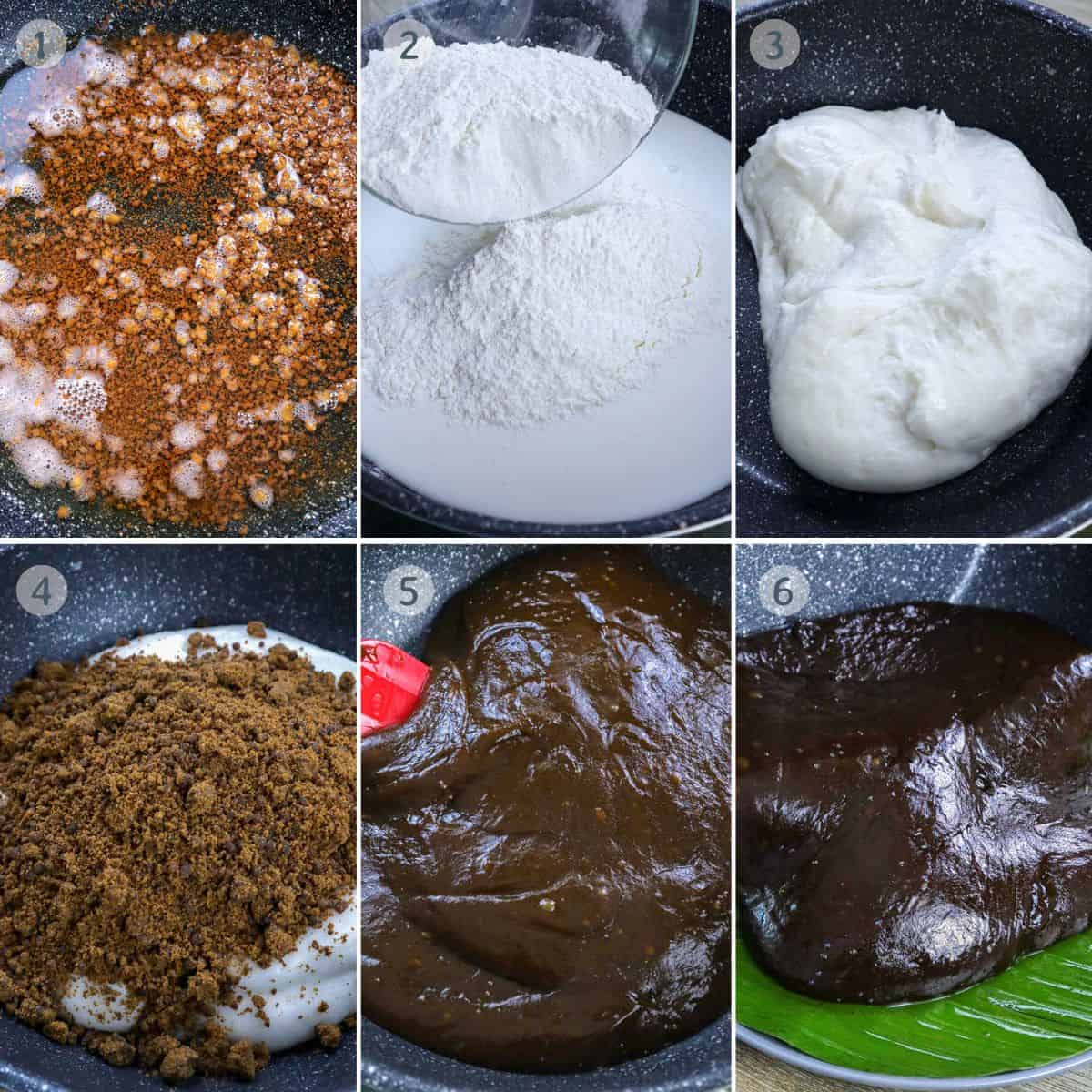
- Make latik- In a pan over medium heat, add coconut cream and bring to a boil. Cook until the liquid starts to thicken. Lower the heat and continue to cook. As oil starts to separate and solids begin to form, regularly stir and scrape the sides and bottom of the pan to prevent burning. Continue cooking and stirring until the curds turn golden brown. Drain the latik from the oil and store in a container until ready to use.
- Prepare kalamay mixture- Combine coconut milk and glutinous rice flour in a wide, non-stick pan.. Whisk together until smooth and lump-free.
- Cook mixture- turn on heat to medium-low and cook the glutinous rice flour mixture, stirring occasionally, until it thickens and forms a smooth dough.
- Add muscovado brown sugar and stir until sugar is dissolved and mixture is evenly brown.
- Cook low and slow. This kalamay recipe is easy but requires plenty of time to make. Expect about 50 minutes to 1 hour of stirring until the mixture is thick and sticky and can barely be lifted from the pan.
- Transfer to serving platter- Line a serving pan with wilted banana leaves and brush leaves with coconut oil from the latik. Transfer the kalamay mixture to the prepared pan and gently tap the pan on the counter to spread it evenly. Use a lightly oiled knife to smooth the top. Brush with coconut oil and top with latik for an extra flavor and nutty crunch. You can also sprinkle it with toasted sesame seeds, crushed peanuts, or toasted coconut for texture and aroma.
Helpful tips
- Use a non-stick pan to make stirring easier.
- Skip brushing the kalamay with coconut oil when serving cold, as the oil will harden into a greasy film.
Frequently Asked Questions
Is kalamay hati gluten-free?
Yes, it's made with sticky or glutinous rice flour, which is naturally gluten-free.
Can I use white sugar instead of brown or muscovado sugar?
Yes, you can, but the kalamay will be lighter in color and have a different taste, losing the caramel flavor.
Serving suggestions and storage instructions
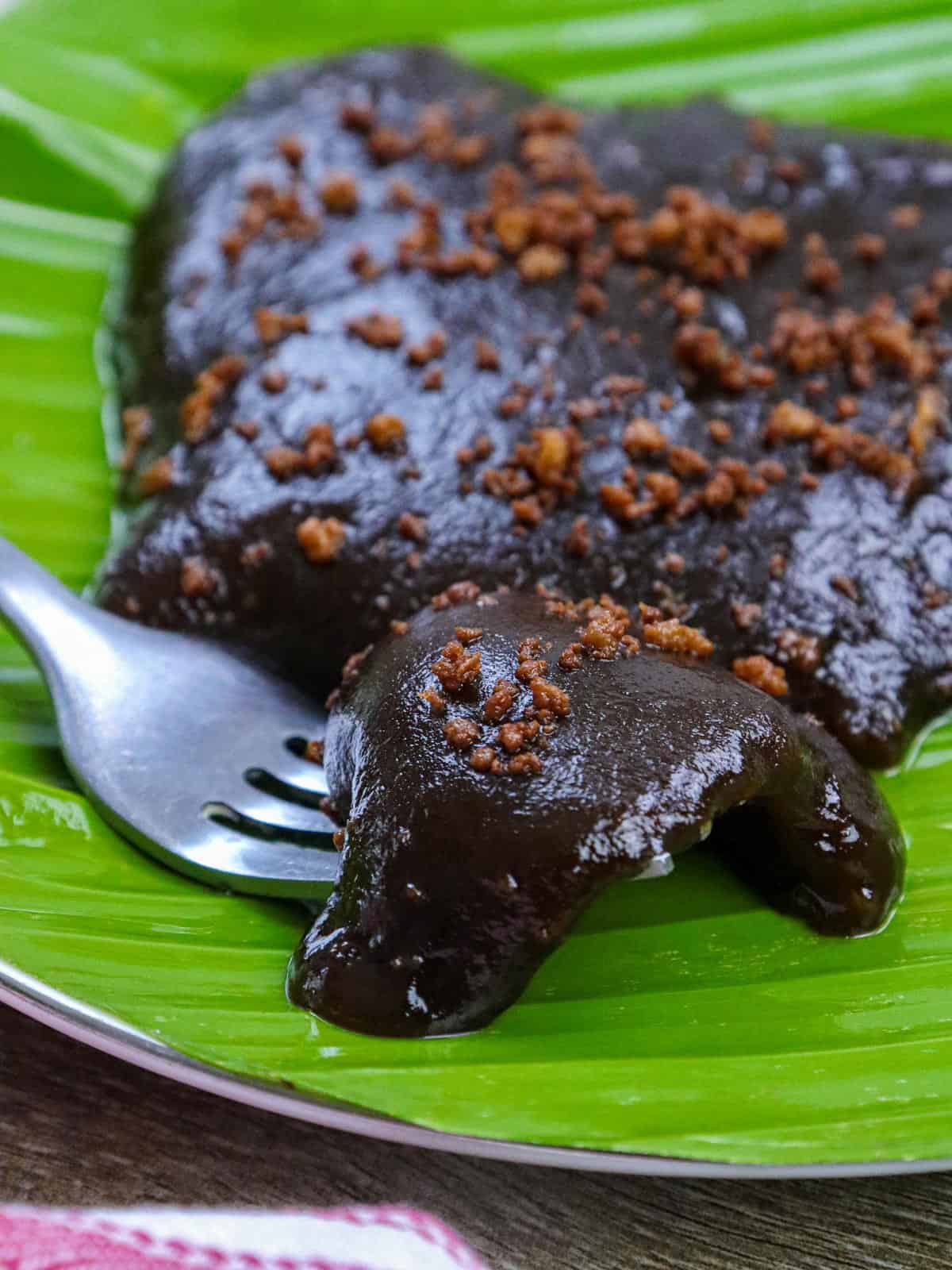
- Kalamay hati is best served at room temperature, as chilling can make it hard. The coconut oil can also harden into a greasy film when cold.
- Enjoy as an after-meal dessert or midday snack with coffee, tea, salabat, or your favorite cold drinks.
- Do not leave the sticky rice cake outside refrigeration for an extended period, especially in warm weather, as it contains coconut milk and will spoil quickly.
- Allow to cool before wrapping or covering, as the excess moisture can make the cake soggy.
- Transfer to airtight containers and refrigerate for up to 3 days or freeze for up to 2 months.
- Reheat in the microwave for a few seconds to soften.
Make sure to include this in your Noche Buena lineup of desserts and enjoy!
Ingredients
- 2 cans (19 ounces each) coconut milk
- 2 cups glutinous rice flour
- 2-½ cups muscovado brown sugar
For the Latik
- 1 cup coconut cream
Instructions
- Line a serving pan with wilted banana leaves and then brush leaves with coconut oil from the latik.
- In a wide non-stick pan, combine coconut milk and glutinous rice flour. Whisk together until smooth and free of lumps.
- Over medium-low heat, cook, stirring frequently, for about 10 to 15 minutes or until mixture thickens and forms a smooth dough.
- Add muscovado brown sugar and stir until sugar is dissolved and mixture is evenly brown in color.
- Continue to cook for about 50 minutes to 1 hour or until mixture is very thick, sticky and can hardly lift from the pan.
- Transfer the kalamay mixture onto the prepared pan. Gently tap pan on the counter to spread mixture. Use a lightly oiled knife to smooth top. Brush surface with coconut oil and top with latik.
For the Latik
- In a pan over medium heat, add coconut cream and bring to a boil. Cook until liquid starts to thicken.
- As oil starts to separate and solids begin to form, regularly stir and scrape sides and bottom of pan to prevent from burning. Continue to cook and stir until curds turn golden brown.
- Drain latik from the oil and store in a container until ready to use.
Notes
- Use a non-stick pan to make stirring easier.
- Skip brushing the kalamay with coconut oil when serving cold, as the oil will harden into a greasy film.
Video

Nutrition Information
“This website provides approximate nutrition information for convenience and as a courtesy only. Nutrition data is gathered primarily from the USDA Food Composition Database, whenever available, or otherwise other online calculators.”

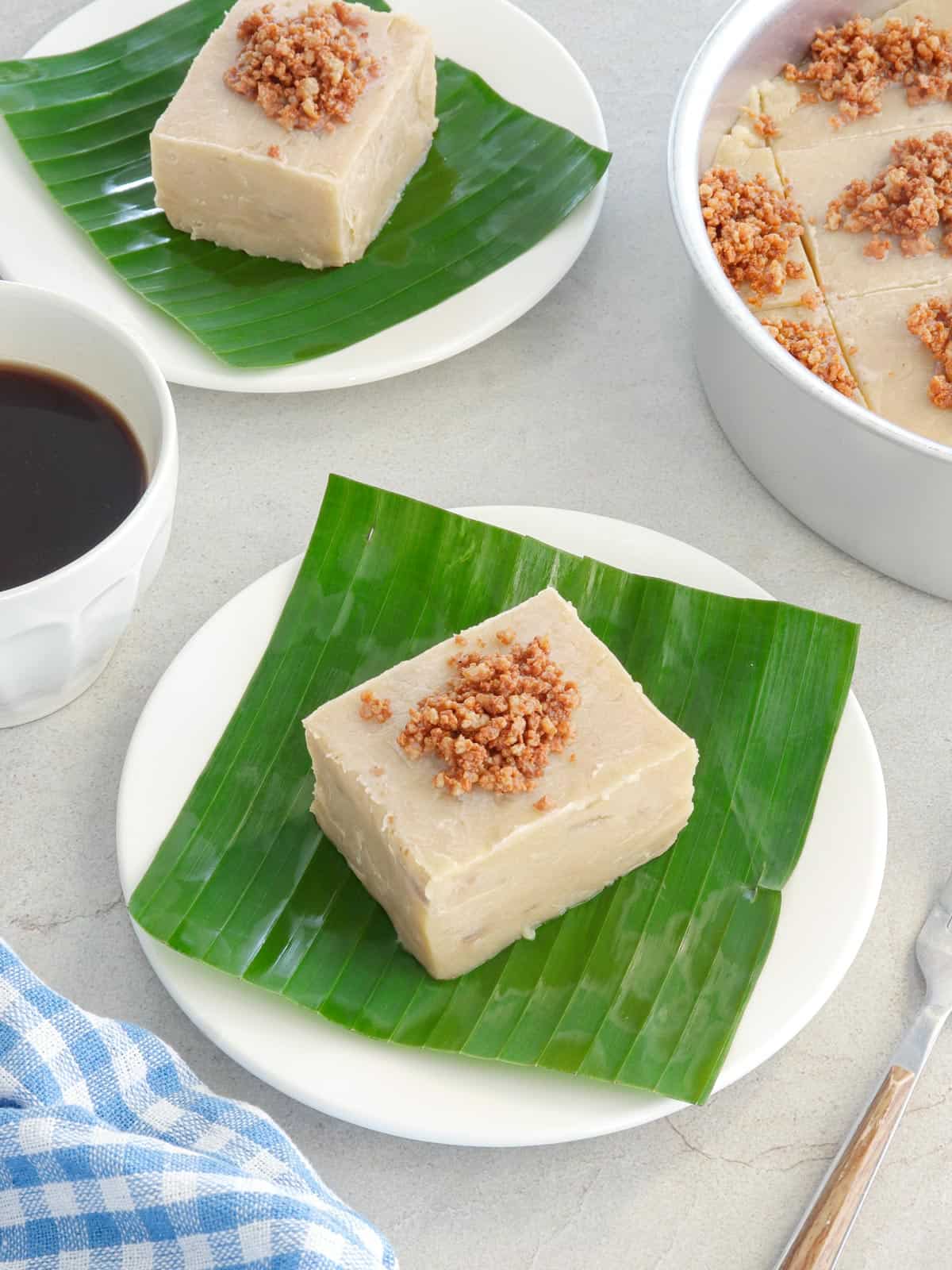
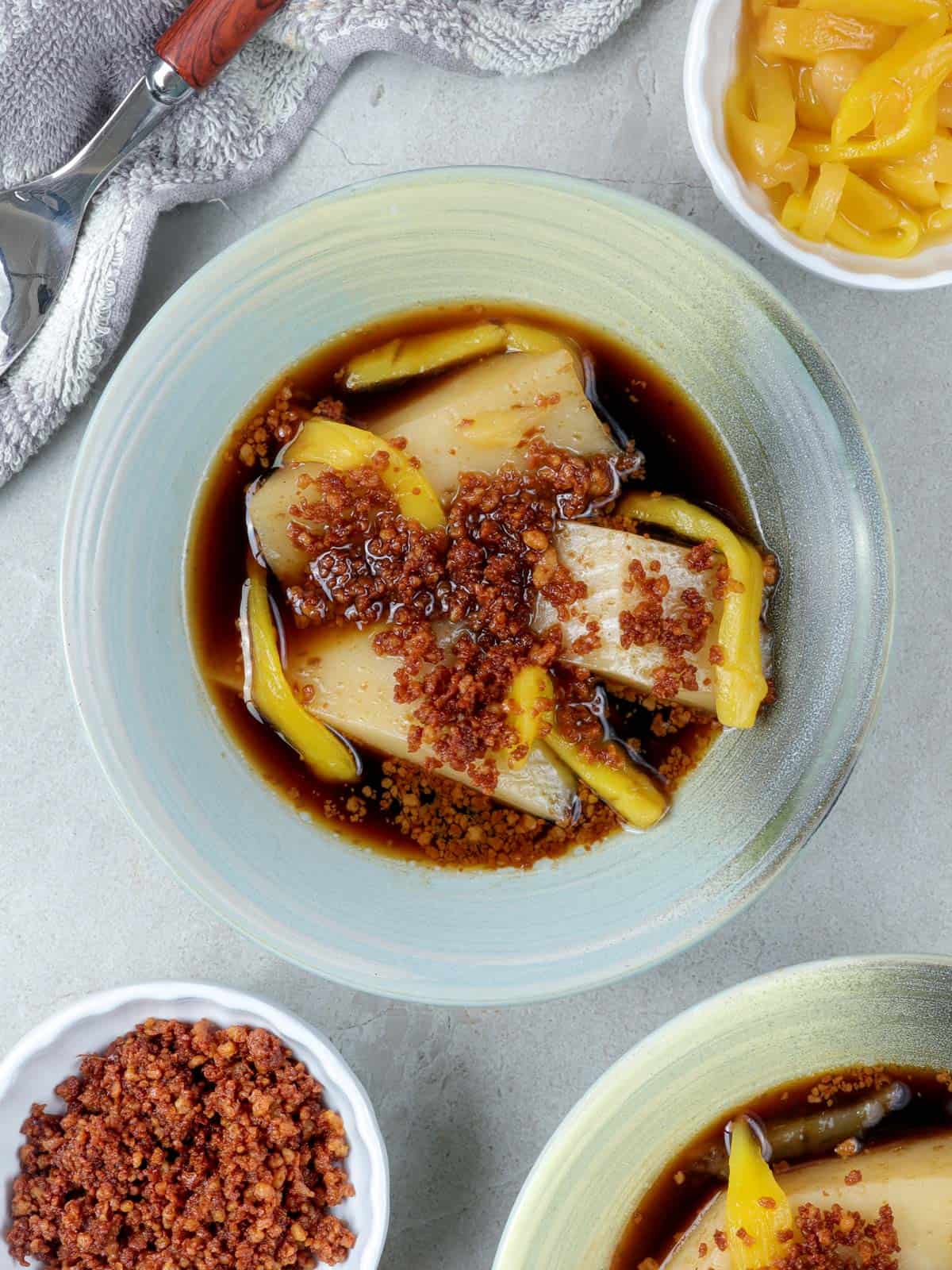
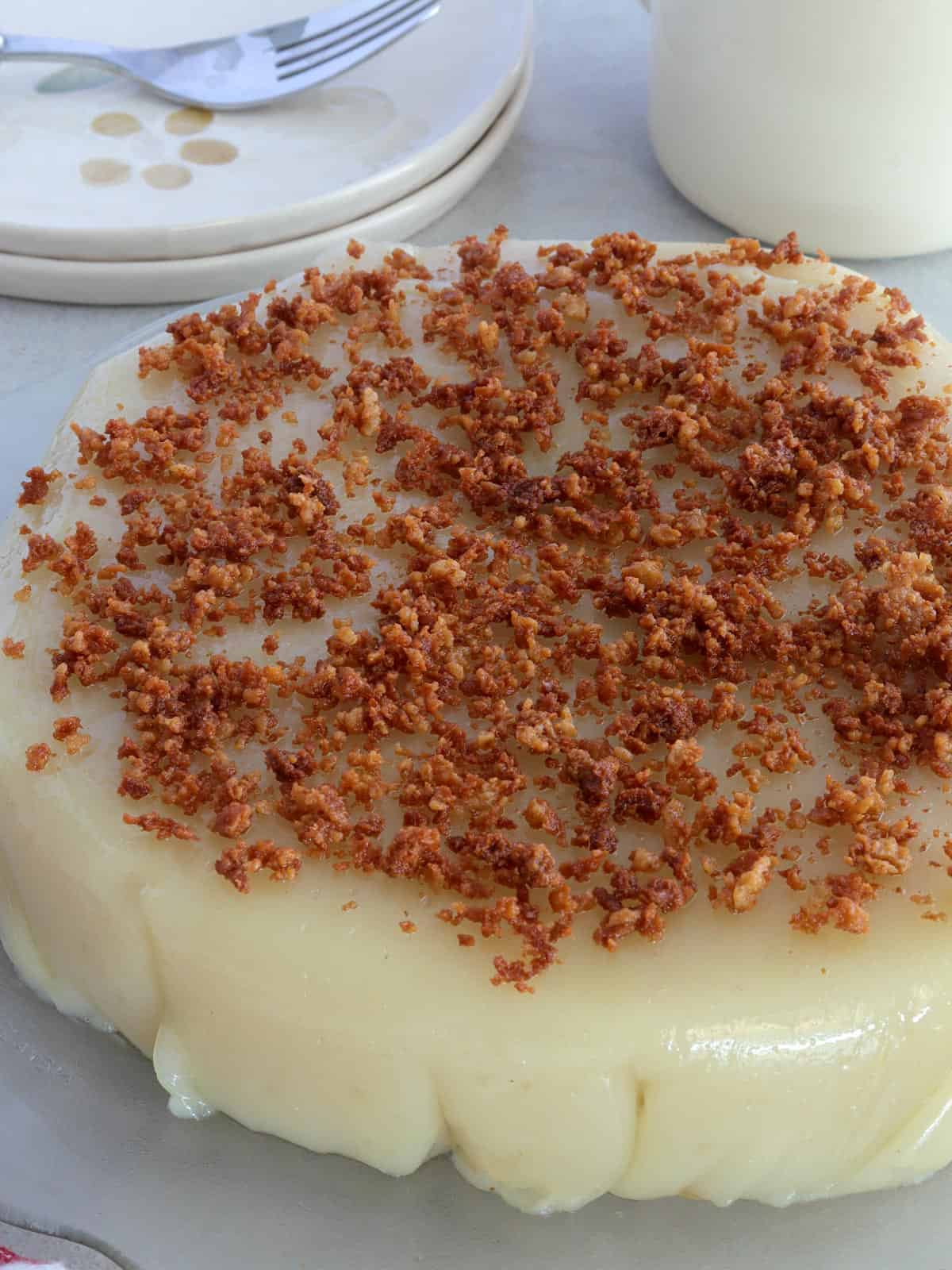

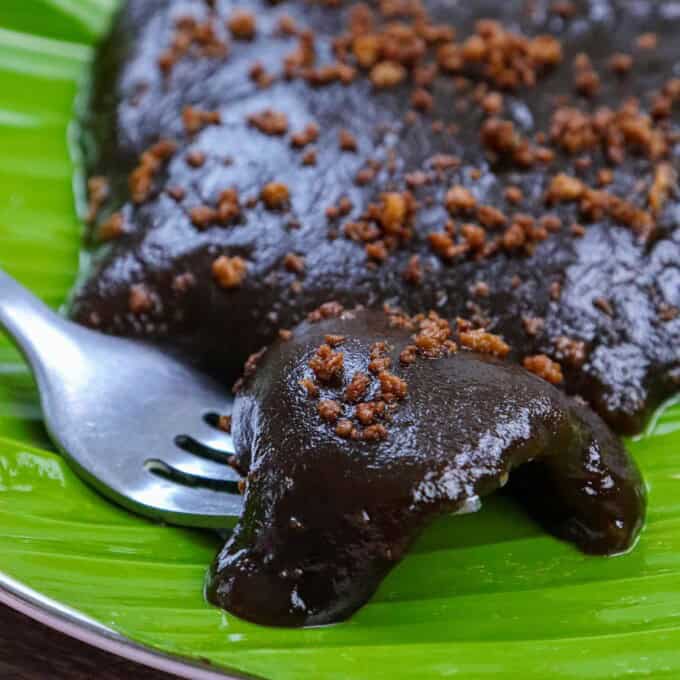
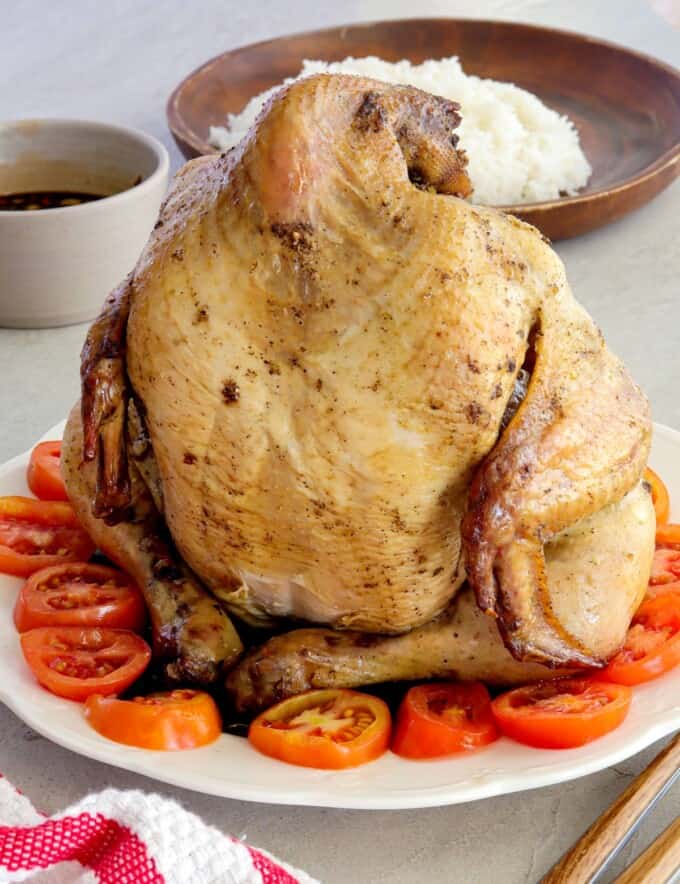
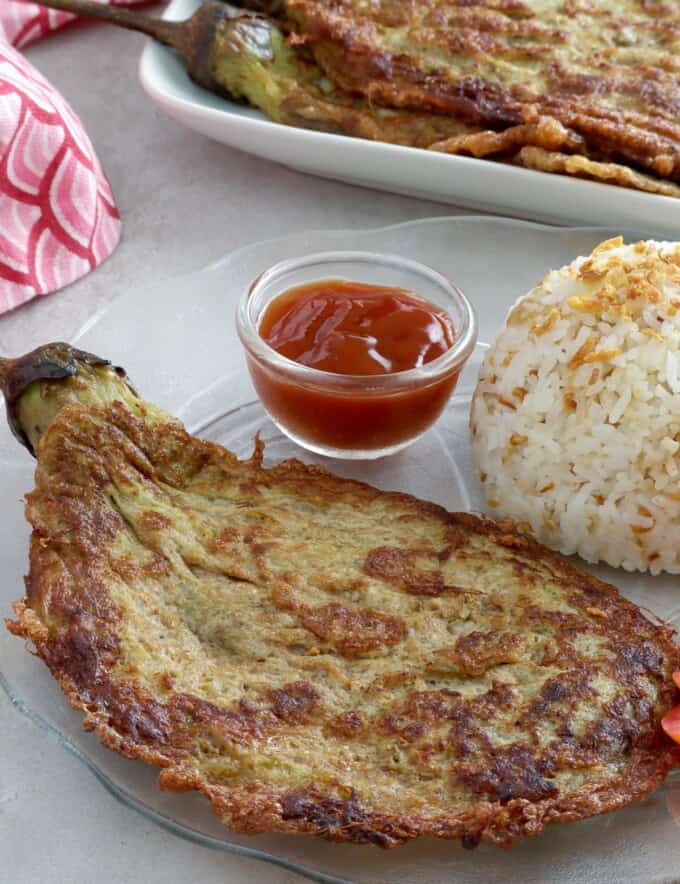
Linda Sayson says
So yummy ,love this Kalamay Hati😋😋
Marilyn Gabriel says
Gawin ko din yan, that reminds me of my late beloved "nanay" so delicious